How To Put On A Dog Harness?
For every dog lover, the bond and energy among both matter more than expected. There is something that you, as a pet owner, need to understand what is best for our furry pets. The waggling tail, their jumps, and licks say it all.
For their health and to increase the bond, it’s necessary to schedule specific activities. Taking them for walks is one of the best activities, and dogs look forward to it.
As responsible pet owners, we always want the best for our furry friends, and ensuring their comfort and protection is a top priority. However, a common predicament for you, as probably a new dog owner is whether you should use a collar or a harness. We say harnessing significantly contributes to the well-being of your dog.
Unlike traditional collars, a dog harness provides greater control and minimizes the risk of injury during walks. It is an excellent choice for dogs of all sizes and temperaments. However, knowing how to put on a dog harness properly is crucial.
But stop your worries there, we'll walk you through putting on a dog harness, offering other information to guarantee a secure and easy fit for your canine friend.
Let's make every walk with your dog an enjoyable experience!
What is a Dog Harness?
Before getting started with dog harnesses, let’s start with the basics, shall we? For new dog owners, this might be a vital query. Harnesses are equipment to restrain and control the dog safely. It is not to imply any harmful act. It is for the protection and behavior adjustment of the dog. Many owners use it.
The harness fits perfectly on the dog’s torso. Some straps firmly clip together around the chest and the shoulder. On your dog, a harness would create better control than a collar. This is due to the force distribution being even across the shoulder and the chest rather than the neck.
Harnessing your canine companion is also great for those with health issues like tracheal collapse. It can increase if you use a collar. So, learn about harness applications for dogs properly go through a few dog harness positioning tutorials too.
Types Of Dog Harness
Choosing an appropriate dog harness is critical for your furry companion. With various types of dog harnesses available, it's vital to consider your pet's specific needs and preferences when selecting.
Here are the different types of dog harnesses to help you make an informed choice for your four-legged friend. Make sure you know the proper way to fasten a dog harness before choosing one-
1. Standard Dog Harness
A standard dog harness is primarily for leash attachment, control, and comfort during walks or other outdoor activities. It contains different straps, buckles, padding, D-ring, and adjustable features. The fasteners and handles are well placed for the dogs to move around safely.
People use standard dog harnesses for walking, hiking, and general control of the dog. They provide a more comfortable and secure alternative to traditional collars. They come in various styles and designs.
Choose the right size and type of harness that suits your dog's specific needs and ensure it's fitted to prevent distress or injury.
2. Step-In Dog Harness
The name tells you about the harness. The step-in harness is an easy-to-use item. One can put it and take it off effortlessly. As the name suggests, the dog steps into the harness, and it's then secured around the body without the need to pull it over the dog's head.
This design is helpful for dogs who particularly feel uneasy with things going over their heads or having certain medical conditions. The step-in harness has two-leg holes, adjustable straps, secure clasps, and a D-ring.
Step-in harnesses are available in various materials, including nylon, leather, and mesh. It comes in diverse styles and sizes to accommodate different breeds and sizes of dogs.
They are a well-liked choice for small dogs and puppies.
Dogs who are scared or anxious about having a harness placed over their heads can have this one put on. You can also look for pup harness application tips for better clarification on step-in harnesses.
3. Front Clip Dog Harness
If your dog suddenly has the “zoomies” episode during their walks, then the front clip on the harness would be the best. Go through the secure dog harness instructions for its effectiveness. It will save you some time.
The front clip dog harness features a D-ring attachment at the chest, offering enhanced control over your dog's behavior during walks. Professionals have designed it to minimize pulling, making it a helpful tool to teach dogs to walk correctly.
Besides, it improves a dog's manners and obedience, a comfy and safe way to guide their movements.
4. Back-Clip Harness
The back-clip harness is a stylish and practical choice for dog owners. It has a D-ring extension on the back, making it ideal for dogs that walk without pulling on the leash.
This harness offers ease of use and adds a fashionable touch to your dog's attire, thanks to its variety in availability.
Whether you have a well-behaved canine buddy or simply want to make a fashion statement with your pup, the back-clip harness is an adaptable and adorable option that combines form and function.
5. Dual-Clip Harness
So you are confused about which one to buy, front-clip and back-clip harness? We think you might be looking for a dual-clip harness. It covers both back and front extensions, making it a versatile choice.
It lets you switch between the two depending on your pet’s training needs and behavior. A dual clip harness is especially great for the pups, as they will walk like a pro very quickly.
6. Overhead Dog Harness
An overhead dog harness secures and controls a dog while distributing pressure evenly in their body. This harness typically features straps wrapped around the dog's torso, with a connection point for a leash or lead located on the dog's back, near the shoulders.
Pet owners and trainers favor overhead dog harnesses because it provides better control and reduces the risk of choking or injury to the dog's neck during walks or training sessions. These harnesses come in eclectic designs and materials.
They promote a more relaxing and safe walking experience. It is a wise choice for those who want their pet's welfare and manage their actions successfully.
7. Fashion Dog Harness
Well, for this one, the name gives it all away, doesn’t it? The combination of dog walks and fashion would not harm. There is practicality and panache in this category of harnesses.
Fashion dog harnesses are obtainable in many different sorts and fabrics. Your stylish dog can look the best with this kind. They come in designs like sequins, faux leather, rhinestones, and trendy patterns.
Your dog will get lots of attention, and you can have fun on walks with these fashionable harnesses. Dressing your dog in a harness would never be so enjoyable.
8. Special Fit Dog Harness
Need a custom-made dog harness? Well, special fit dog harnesses are for that. They accommodate dogs of all sizes and shapes. Its modular design allows it to fit dogs with various special needs, like those missing a limb or requiring extra support.
It means that no matter how your dog may be in physical aspects, you can still get the “pawfect” harness for them. It should fit correctly.
The special fit harness is a versatile solution. It also becomes an all-inclusive harness for different dogs with unique requirements.
9. No Pull Dog Harness
Do you have a frantic, naughty dog? No pull would be an ideal harness for them. Such a harness exists primarily to teach the dogs some leash manners. There’s a common notion that no-pull harnesses are cruel to pets, but it’s not the case. As professionals, we assure you that it is a great walking aid. They come in different types as well so it is best to check the size, design, and configuration before buying.
Professionals design this one to prevent your dog from pulling on the leash by connecting it to a front-mounted D-Ring. When your dog tries to pull, the harness redirects the leash to the side, making it difficult for them to move forward.
How To Put On A Dog Harness of Different Types?
Putting on a dog harness can differ depending on the type of harness you have. Each harness, whether a step-in, overhead, or vest harness, has its specific way.
We have already discussed the different kinds of stylish dog harnesses. Below, we will provide a dog harness step-by-step guide to ensure an easy and secure fit for your pup. Before we start, please make sure your dog is in the right state of mind. Do not force the harness on them at any cost. Let them get used to it. If their body language shows otherwise, try something else.
So let’s start with it-
1. Standard Dog Harness
Putting on a standard dog harness might seem tricky at first, but by following these steps, you will have it down in no time. A standard harness typically consists of one loop around the ribs, one loop around the neck, and a D-ring on your dog's back to attach the leash.
Step 1:Prepare your dog- Usually, you will find most of the dogs with hyper energy and frantic actions. So start by positioning your dog in a standing or sitting position. Notice when your dog is calm, and then grab that opportunity.
Step 2: Slip it on- Your dog may retaliate initially. But gently slide the harness over your dog's head, ensuring the D-ring is on your dog's back. The wider loop with the buckle should go on first, and the narrower one should go on second.
Step 3: Guide the leg- Slide one of your dog's legs through the first leg hole of the harness. This leg should now be positioned between the loop going around the ribs and the one that encircles the neck.
Step 4: Buckle up- Now, buckle the harness so that your dog's other leg goes through the proper leg hole. If the buckle doesn't quite reach too close, you have to loosen the strap slightly.
Step 5: Adjust the fit- Once you buckle the harness, ensure adjusting and attaching a dog harness properly. Follow the 2-finger rule. You should be able to slip two fingers comfortably underneath any strap. To ensure security, try gently pulling the harness over your dog's head to ensure it's guarded and well-fitted.
Step 6:Treat time!- Ivan Pavlov’s classical conditioning theory says animals learn faster with positive reinforcement. If you give praise or treats to your dog after putting on the harness, they will associate it with something nice and slowly learn to love the harness.
2. Step-in Dog Harness
Step-in harnesses are slightly different from standard harnesses, forming triangular shapes around your dog's legs. Here's how to put on a step-in harness and ensure your dog's comfort and safety-
Step 1: Prepare the harness- Lay the harness flat on the ground with the two triangular portions visible. Let your dog smell it to get familiar with it. Also, be certain that the buckles are positioned on top of the D-rings.
Step 2: Position your dog- As said before, choose a time when your dog has a calm demeanor. Approach your dog from behind and gently hold them in place. Then, guide your dog's front feet into the two triangular openings of the harness.
Step 3: Fasten the harness- Lift the two ends of the harness and securely clip them together on your pet's back. It should create a secure and cozy fit around your dog's body.
Step 4: Alter it for comfort- Once the harness is fastened, take a moment to adjust it for the best fit. You should be able to slip two fingers underneath any strap comfortably. Gently pull it over your dog's head to see that the harness is locked. Know how to correctly use dog harness, and you are good to go.
For the step-in, this is the best method to put on a dog harness. The triangular design of this type of harness offers a safe and suitable fit while providing convenience during the harnessing process.
3. Front-Clip Dog Harness
Putting on a front-clip harness is a great way to discourage pulling during walks. To ensure a proper fit and a comfortable experience for your dog with a front-clip harness, follow these easy steps:
Step 1: Unbuckle the harness- Start by unbuckling the front-clip harness and place the D-shaped ring. It should be at the front of the harness.
Step 2: Slip it over the head- Tenderly slide the harness over their head. The D-shaped ring should be at the front, over their chest. If it’s not, recorrect it.
Step 3: Secure the harness- Take the two loose ends of the harness and fasten them under the chest. It should create a good and relaxed fit for the dog.
Step 4: Adjust for sizing- Carefully adjust the harness to ensure your dog cannot escape from it while still allowing your pet to feel at ease. Make their harness experience lovable for them.
Step 5: Attach the leash- Click the leash onto the D-shaped ring at the front of the harness. This position is designed to discourage pulling and improve control during walks.
Step 6: Reward your pet- After successfully fitting the harness, don't forget to reward your beloved companion with their favorite treat as a token of appreciation!
4. Dual Ring Dog Harness
Here are the steps for putting a dual-ring harness, a flexible way to train a dog. We give you the proper harness fastening method so that you don’t go wrong with the process-
Step 1- You will need your dog to be still and familiarize them with the new object. Then, begin by holding the harness with the handle or the back-clip attachment. Ensure that the straps are facing downwards.
Step 2- Gently guide your pet's head through the harness opening, ensuring it comfortably rests on their shoulders and chest.
Step 3- Lift one of your dog's front legs and place it through the corresponding loop. Repeat the same process with the other leg.
Step 4- Secure the harness by buckling it around the torso. As always, make sure the dog is comfortable. Read the body language and adjust the harness accordingly.
5. Back-Clip Dog Harness
If you have a small dog, a back clip harness would work well on them. It is a good choice. We provide you with the main steps on how to put a back clip dog harness. Here you go-
Step 1: Prepare the harness- After they are familiar with the new item, start by unclipping the harness straps and laying them out flat on the floor. It makes it easier to work with.
Step 2: Slide it over the head and buckle- Slip the harness tenderly while they are lying flat. Now, take both ends of the harness and bring it together beneath the chest. It should be where the harness fastens.
Step 3: Position the D-ring- You will find a D-shaped ring where you have to attach the leash. The ring should be on their back, closer to the shoulder.
Step 4: Adjusting the harness- As we have said for all, make sure the harness is not too constraining and not too loose. Adjust the strap as needed.
Step 5: Give rewards- To make the experience positive for your furry friend, give them a treat. This way, they will associate wearing the harness with something nice.
6. Special Fit Dog Harness
A special fit dog harness comes with a modular approach and luxurious materials. It ensures an easy and protected fit for your canine companion. Follow these steps to fit this type of harness on your dog correctly-
Step 1- Start by fastening the buckle around the neck of your dog. Make sure it's comfortable. The neck buckle is the initial point of attachment for the harness.
Step 2- Lift the straps from under their front legs and secure the remaining buckles in place. These additional buckles typically connect the straps under the chest and body, creating a supportive and snug fit for your dog.
Step 3- Adjust the sizing and fit of the harness to prioritize both comfort and protection. Ensure the harness doesn't constrict the movements or rub against their skin. You should be able to slide two fingers easily under any strap for the perfect balance between snugness and comfort.
7. Overhead Harness
Overhead harnesses are easy to put, and the process of putting is no different than others. Nevertheless, we shall guide you on how to put on a dog harness-
Step 1: Get your dog close and put it on- Ask your furry friend to sit near you so they are calm and ready for their harness. Slide it over their head, and ensure you use the right hole for their neck.
Step 2: One paw at a time- Help your dog by putting one paw at a time through the loops in the harness. It's like helping them put on their shoes.
Step 3: Strap behind and buckle- Lift the straps behind your dog's body, just like fastening a backpack. Then secure the buckle. Make sure the harness is not too constraining for the dog. Then secure the buckle; this keeps it in place.
Step 4: Adjust for comfort- Check if the harness fits well. It should be comfy for your dog and not too loose. If needed, adjust the straps to make it just right.
8. Fashion Dog Harness
Need a fun and fashionable way to walk your dogs? Dressing up your small dog in a fashionable harness can be refreshing for some owners.
Let's go through the steps of putting on your dog's fashion harness-
Step 1: Unbuckle and put the harness- Open the harness by unclipping the straps. It will make the process easier to put. Gently slip the harness over their head and see if it’s properly placed on the chest. It’s like putting a t-shirt on your dog.
Step 2: Clip the buckle- Now clip the harness properly on the back. Imagine it as fastening a seatbelt, making sure it’s tight but not too tight.
Step 3: Adjust the size- If there is an adjustable strap on your harness, use it correctly so that the dog can walk with ease. Too loose and too tight may create problems.
Step 4: Shower praises- Now that you are done with putting on the harness, throw appreciation. Dogs thrive on positive reinforcement. Keep showering praises and give treats so that they understand the situation.
9. No Pull Dog Harness
Putting on a no-pull dog harness properly is vital for your dog's well-being and safety. After you familiarize your dog with the new harness, let it inspect and observe so they have reduced anxiety. After that, here are the steps to properly put on a no-pull dog harness-
Step 1: Identify the front and back- Most no-pull harnesses have a front and a back. The front typically has a loop or attachment point for the leash, and the back may have adjustable straps or other features. Ensure you can distinguish between the front and back of the harness.
Step 2: Open the harness- Lay the harness flat on the ground or hold it in your hands, with the front side facing up.
Step 3: Place the harness over your dog's head- Gently guide their head through the opening, with the front loop positioned on their chest. Be patient and avoid any sudden movements that may startle your dog.
Step 4: Secure the harness- After your dog's head is through, fasten the harness around their body. It may involve using buckles, clips, or straps, depending on the harness design. Ensure it isn't suffocating your pet. You should be able to fit two fingers comfortably between the harness and your dog's skin.
Step 5: Adjust the straps- Some no-pull harnesses have adjustable straps for a customized fit. Check that the harness does not scratch or rub against your dog's skin.
Step 6: Attach the leash- Attach the leash to the front attachment point on the chest after fastening the harness. This positioning discourages pulling by redirecting their forward motion when they pull on the leash. Choosing the ideal leash is also crucial, as it ensures both your dog's safety & comfort. You can explore these designer dog leashes recommended by our experts.
Step 7: Practice with short walks- Before heading out for a longer walk, take your dog on a short practice walk to get them used to the new harness. It will help your dog associate the harness with positive experiences.
Remember that it may take some time for your dog to get used to wearing a harness, especially if they are unfamiliar with it. Be patient and use positive reinforcement, like treats and praise, to make the experience pleasant for your dog. If you are unsure about the proper fit or harness use, consult a quick guide to harnessing a dog or seek advice from a professional dog trainer.
The Pros and Cons of Harnesses and Collars
Harnesses and collars are two common types of equipment used to control and manage dogs during walks and other activities. Each has its own set of advantages and disadvantages. The choice between the two depends on various factors, including the behavior, the dog's size, and individual needs.
In this section, we'll explore the pros and cons of both harnesses and collars.
Advantages of Using Harnesses
- Better control and reduced strain- We know how dogs tend to wander away because of heightened senses and increased curiosity. It is vital to have some control over them without letting them feel completely restrained and dull. That’s why harnesses are designed to distribute the pressure evenly across a dog's chest and back. It reduces the risk of injury, choking, or other distress. They deliver greater control, making them suitable for dogs that pull on the leash.
- Discourages pulling- Many harnesses come with front-attachment points that discourage dogs from pulling. When a dog pulls, the harness gently redirects their forward motion, promoting more controlled behavior during walks.
- No damage to the throat- Unlike collars, harnesses don't put pressure on the dog's throat. This is important for breeds prone to tracheal damage or issues, like brachycephalic dogs. They work great on small dogs with fragile trachea.
- Support for rehabilitation- Harnesses are suitable for dogs recovering from injuries, surgeries, or those with mobility issues, as they offer additional support and stability. Many doctors and trainers use it as a special tool and have been successful.
Disadvantages of Using Harnesses
- More expensive- Money matters in every aspect of life. Quality harnesses can be costlier than standard collars. It may be a drawback for budget-conscious pet owners.
- Potential rubbing/chafing- Poorly fitted harnesses can cause chafing or rubbing on the dog's skin, so proper sizing and fitting are crucial. Accordingly, consult a professional or someone you know who owns a pet dog or read a dog harness fitting guide.
- Difficult to control initially- Some dogs may resist wearing a harness initially, making it challenging to put it on or take them for walks. It is common among dogs, and the owner has to be patient with them at the start. But if you see extreme resistance or change in their body language, consult a professional for guidance.
Advantages of Using Collars
- Simplicity and affordability- There is something very simple about collars. They are straightforward to use and are generally more affordable than harnesses. Dog collars come in various materials and styles, making them easily accessible for most dog owners.
- ID and license tags- Imagine losing your dog somewhere. It would be a devastating experience for any pet owner. Collars are a convenient way to display identification tags and license information to combat this situation. It can be of crucial use if your dog ever gets lost.
- Training tool- Certain types of collars, like martingale or prong collars, can be effective training aids. Use it correctly under the guidance of a professional dog trainer.
Disadvantages of Using Collars
- Risk of injury- Collars put pressure on the dog's neck. It can lead to injuries, especially if the dog pulls on the leash or has a tendency to lunge. This pressure can damage the trachea, cause coughing, or aggravate existing health issues.
- Limited control- Collars provide less control, making it difficult to manage strong pullers or larger dogs. It can result in a less enjoyable walking experience for the dog and the owner. And you do not want that for your pet.
- Not suitable for all breeds- Dogs with respiratory issues, like brachycephalic breeds (e.g., Bulldogs, Pugs), or dogs prone to neck injuries should avoid collars altogether. Consult with a professional before buying one if you wish to.
- Psychological impact- In some cases, the constant pressure on the neck can lead to stress and anxiety in dogs. Of course, it will eventually affect their overall well-being.
Which Harness is Best for Your Dog?
Choosing a harness can be a challenging decision as you have to look into different varieties. The harnesses have different designs and purposes. It is also made as per separate dog breeds. So, to determine which one is the best, you should consider things like dog size, activity level, and behavior. After much deliberation, here’s what we think will be suitable for your dog-
- A standard dog harness is for all breeds, especially those who pull on the leash.
- Front clip harness is for dogs excessively pulling on the leash
- The back clip is for dogs who are well-behaved and don’t pull much.
- A step-in harness is suitable for dogs that do not like things going over the head.
- No-pull harnesses are for dogs who need extra training and pull excessively.
- A dual-ring harness is a flexible one. It is the best harness fitting for puppies for the initial training days.
When choosing a harness for your dog, know that some may need custom-made ones. It's essential to measure your dog accurately to guarantee the harness fits comfortably but not too compressed.
You should follow dog harness donning tips for fitting it correctly. Consult with an expert dog trainer for dog harness how-to fit or a veterinarian for some guidance for the furry friend. You can also watch the dog harness placement tutorial for help.
Letting Your Dog Enjoy a Harness- How To Achieve That?
Sometimes, dogs may not like an external item on their body for various reasons. It may trigger them- and make them uncomfortable. That is why you need to be training dogs to wear harnesses. It will help dogs enjoy wearing it. It is essential for their ease and protection during walks and other activities.
Some dogs may initially be resistant to wearing a harness. You need nothing but patience with them. Deliver positive reinforcement and proper training, so you can make the experience enjoyable for them.
- Choose the appropriate harness- Your dog’s comfort should be a priority; we have mentioned it before. The harness should neither be too tight nor too loose. Measure your dog's girth to determine the correct size.
- Start early- It's easier to introduce a harness to a puppy or a young dog. However, you can train older dogs to wear one.
- Positive association and reinforcement- Create a positive association between the harness and the experiences. Let them sniff and explore the new object and familiarize themselves with it. You could offer some treats and praise when they start showing interest or interacting with it.
- Short wear time- Initially, put the harness on them for a short period. Let them roam around without it, and gradually increase the harness time.
- Regular practice- Handle the harness gently so the dog doesn’t feel negative about it.
- Monitor for discomfort- Pay attention to actions like rubbing, chafing, or irritation from the harness.
- Seek professional help- If your dog resists wearing a harness or shows anxiety or fear, consider consulting a professional dog trainer or behaviorist. They can provide specific guidance and techniques tailored to your dog's needs.
How to Measure a Harness Correctly?
Measuring a harness accurately is essential for the dog's ease and protection. Here's a step-by-step guide on how to measure a harness:
- Gather tools: You'll need a flexible measuring tape, a pen or pencil, and a piece of paper to record the measurements.
- Position your dog: Place your dog in a standing position on a flat surface, such as the floor. They should be relaxed and not pulling on the leash.
- Measure the girth: The girth is the circumference of your dog's chest just behind their front legs. Use the measuring tape to encircle your dog's chest, making sure it’s not extra tight. Measure in inches or centimeters, depending on your preference.
- Measure the neck size: Wrap the tape around the base of the neck where a collar would typically sit to measure your dog's neck size.
- Measure the back length (optional): Measure the base of their neck to the tail's base for the portion that goes along your dog's back. This measurement can help you choose the right size for a more comprehensive harness.
- Refer to the harness size chart: Each harness manufacturer typically provides a size chart that correlates your dog's measurements to the appropriate harness size. Use the measurements to find the corresponding size on the chart.
- Select the correct size: Based on the dog harness attachment guidance and size chart, choose the best fit. Remember, different brands may have slightly different sizing, so always refer to the specific dog gear application instructions.
- Try on the harness: Once you have the harness, put it on your dog and make sure it fits comfortably. Start using a harness for dog walking, and for any issues, contact a professional.
Deciding The Tightness Of A Dog Harness
Are you attaching harnesses for pets? Put a dog harness only according to your pet’s size. A well-fitted harness would do wonders for you and your pet. Allow to slide two fingers between the harness and your dog's body. It ensures free-flow activity, no chafing, and doesn’t affect breathing. It is a golden dog harness application advice.
For safety, a proper-fitting harness, such as a DC harness, is crucial to prevent your dog from slipping out. Adjust the straps regularly, as your dog's size can change. Look out for wear and tear, and replace the harness if it gets damaged or no longer fits properly.
Remember, safety and ease are all that matter for your dog. Therefore, research the correct way to secure dog harnesses.
The Dog Harness Strap Placements
Placing the dog harness straps appropriately is crucial. It is for the effectiveness of the harness. Here are a few places to put a dog harness strap. For better understanding, read the step-by-step harness placement guidelines as well.
Around the neck- For most harnesses, the neck strap should sit comfortably just behind your dog's ears and around the base of the neck. You should be able to slide two fingers between the strap and your dog's neck. Avoid placing it too close to the throat. It may lead to choking or discomfort.
Across the chest- The chest strap should sit across the dog's chest, just behind the front legs. The straps are usually horizontal. It helps distribute pressure evenly. Make sure, it's not overly tight to avoid chafing or restricting the pet’s shoulder movement.
Beneath the belly- If you have a harness with a belly strap, it should fit comfortably under the belly, slightly behind the rib-cage. The strap stops the harness from twisting or shifting during walks. Make sure your dog can breathe easily after the strap adjustment.
Remember that every harness and strap may be different. Read the easy steps for dog harness setup for better work.
How To Adjust the Dog Harness?
Studies say 9 out of 10 dogs take off the harness to let the owners adjust it. Harness adjustment is part of the process because your dog will change in time. Now, let’s not be emotional and see it practically. Dogs will have changed behavior, body size, and speed as they grow older. They may even face injuries or health issues. You need to assess this bit and adjust their strap accordingly, especially when you secure harnesses for small dogs.
Even a new haircut can impact the harness fit. Dogs with longer or thicker fur may need looser straps after a trim. Those with shorter hair might require a tighter adjustment. An improperly fitted harness can lead to lots of distress.
Examine the straps to adjust them according to the body carefully. The adjusters on the harness should suffice the need. Measure the chest (both sides should have equal-length straps), sides, widths, and belly accurately. It will help get an idea. Usually, as mentioned before, a 2-4 finger tightness should work.
Regular checks and adjustments are particularly vital for puppies who are still growing. As they develop, their bodies change, and a harness that once fit perfectly may become too tight or too loose. Likewise, adult dogs can experience weight fluctuations over time, whether due to changes in diet, activity level, or simply the natural aging process. If you still have doubts, you can go through or ask about harnessing tips for dog owners.
Doodle Couture- It’s All About Your Pets!
Now that you know about the dog harness fitting technique, at first glance, it may seem daunting. We know securing a dog’s harness can take time. However, with a little perseverance and practice, it can become second nature. It's essential to recognize the type of harness you have and diligently follow the specific instructions for its application.
Prioritize ensuring a fitting harness for your furry friend, and be ready to make necessary adjustments. A well-fitted harness plays a pivotal role in your dog's well-being and security, so invest the time to accurately measure your dog's body and choose the right size.
At Doodle Couture, you'll find some of the finest dog harnesses, along with many other products. The carefully curated items have received several accolades and prizes. So try them and create a world of difference in you and your pet's life.



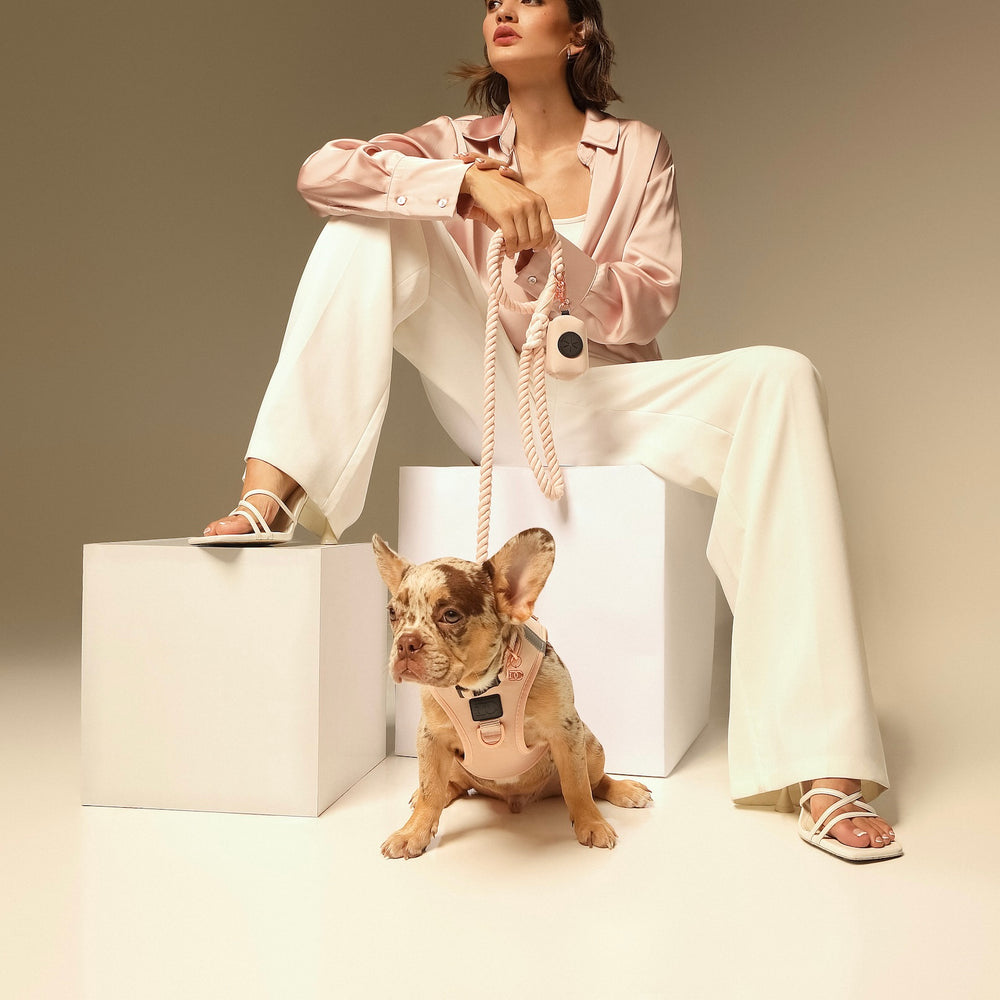
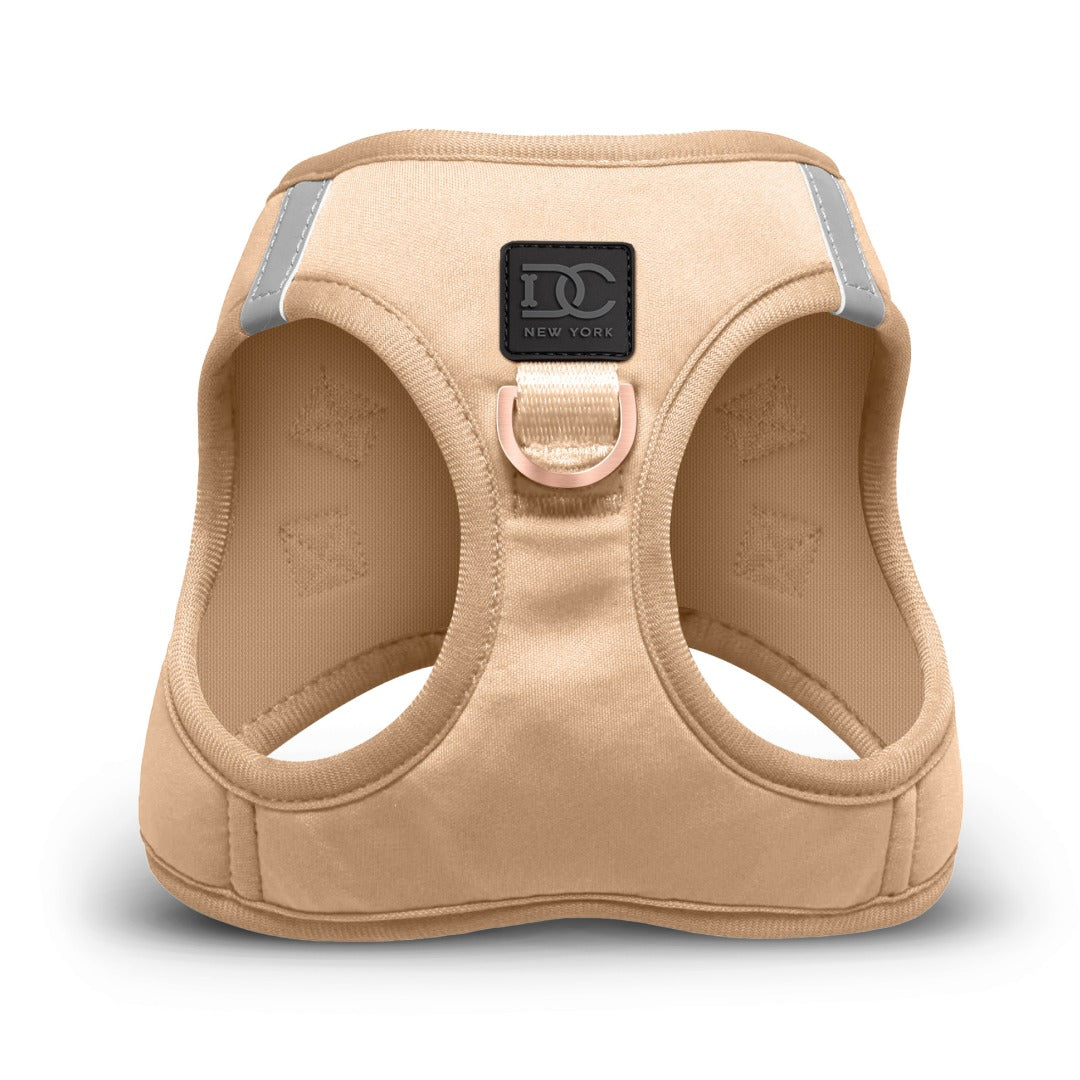
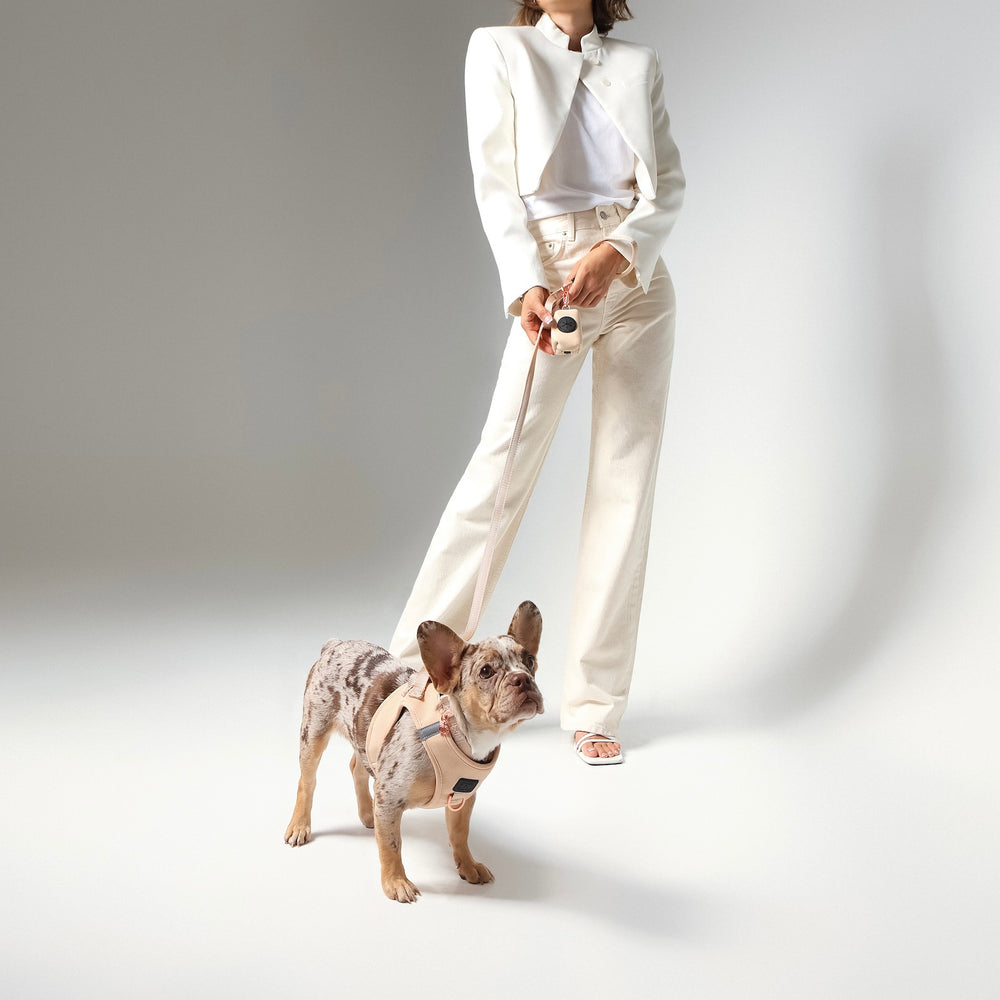
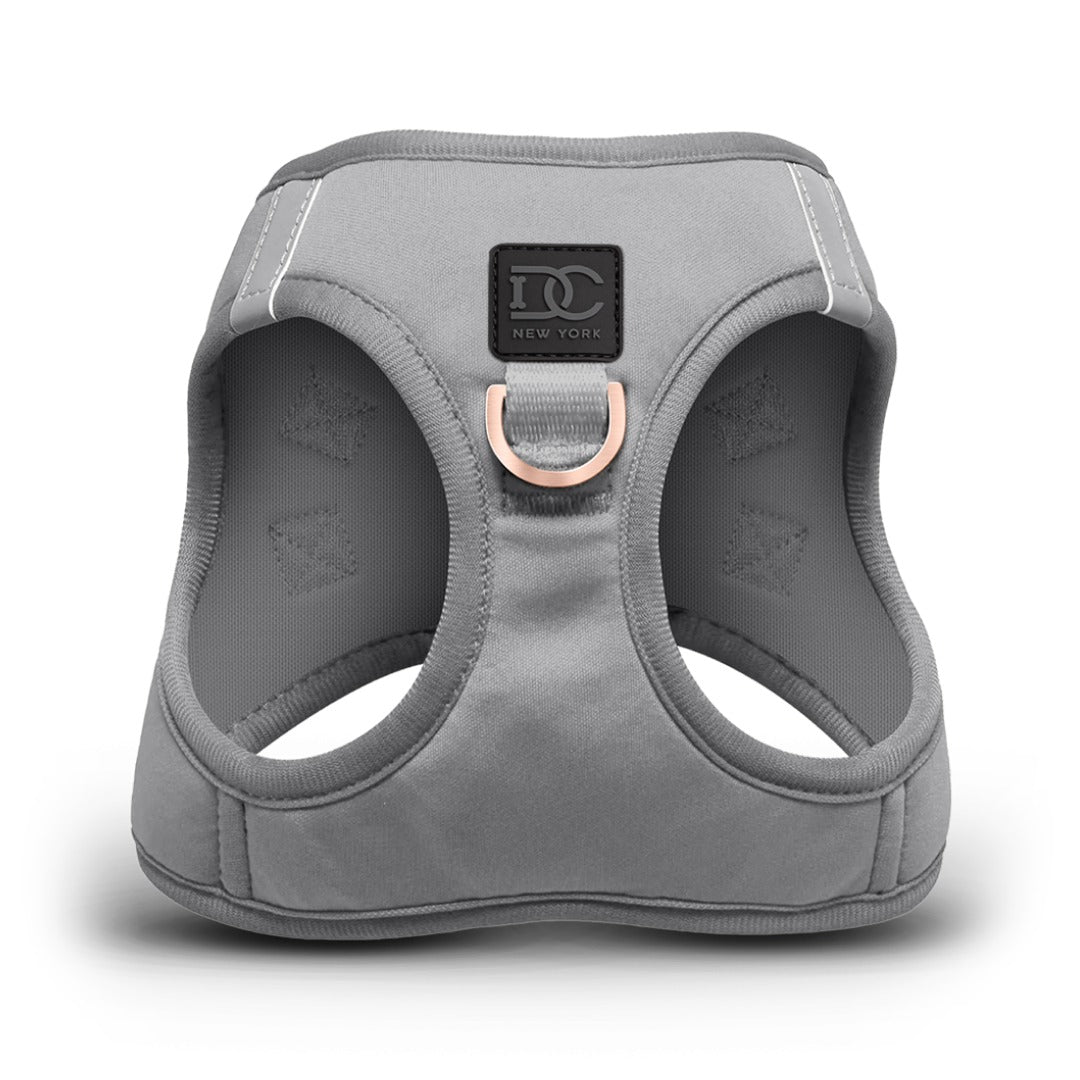
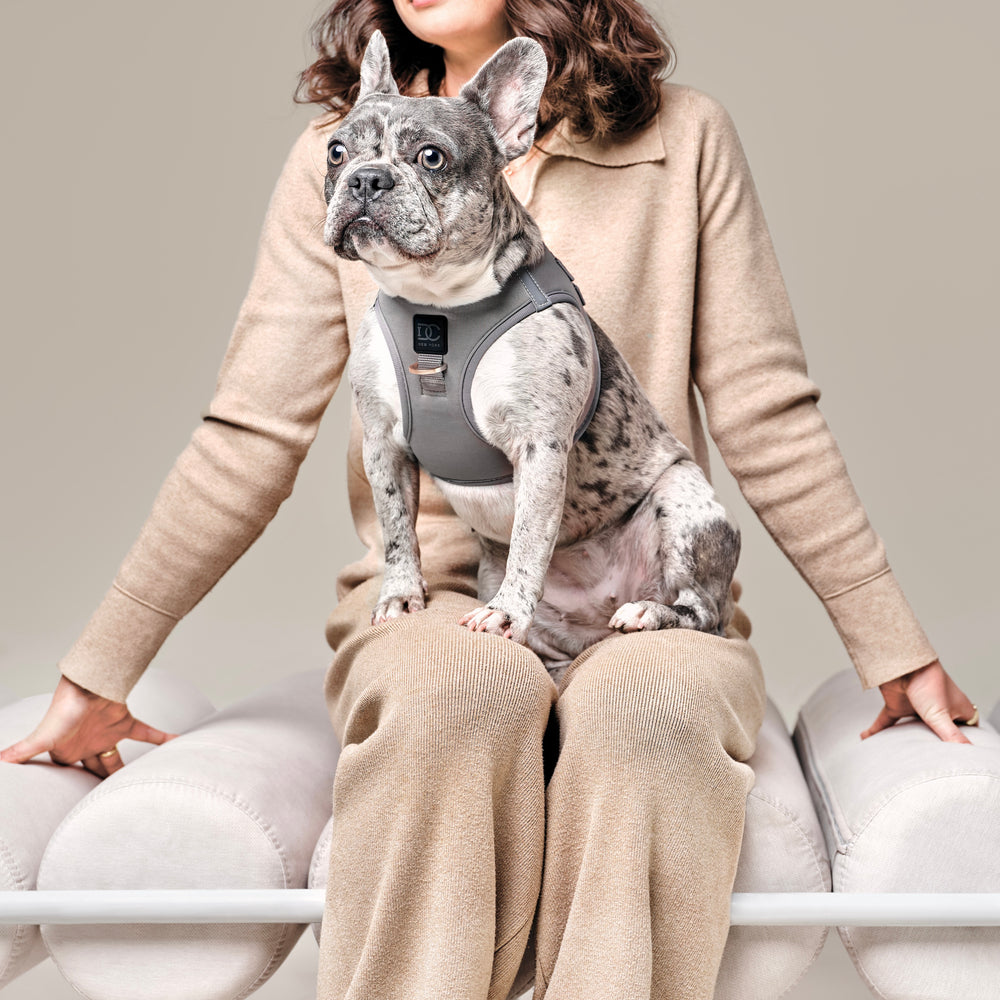
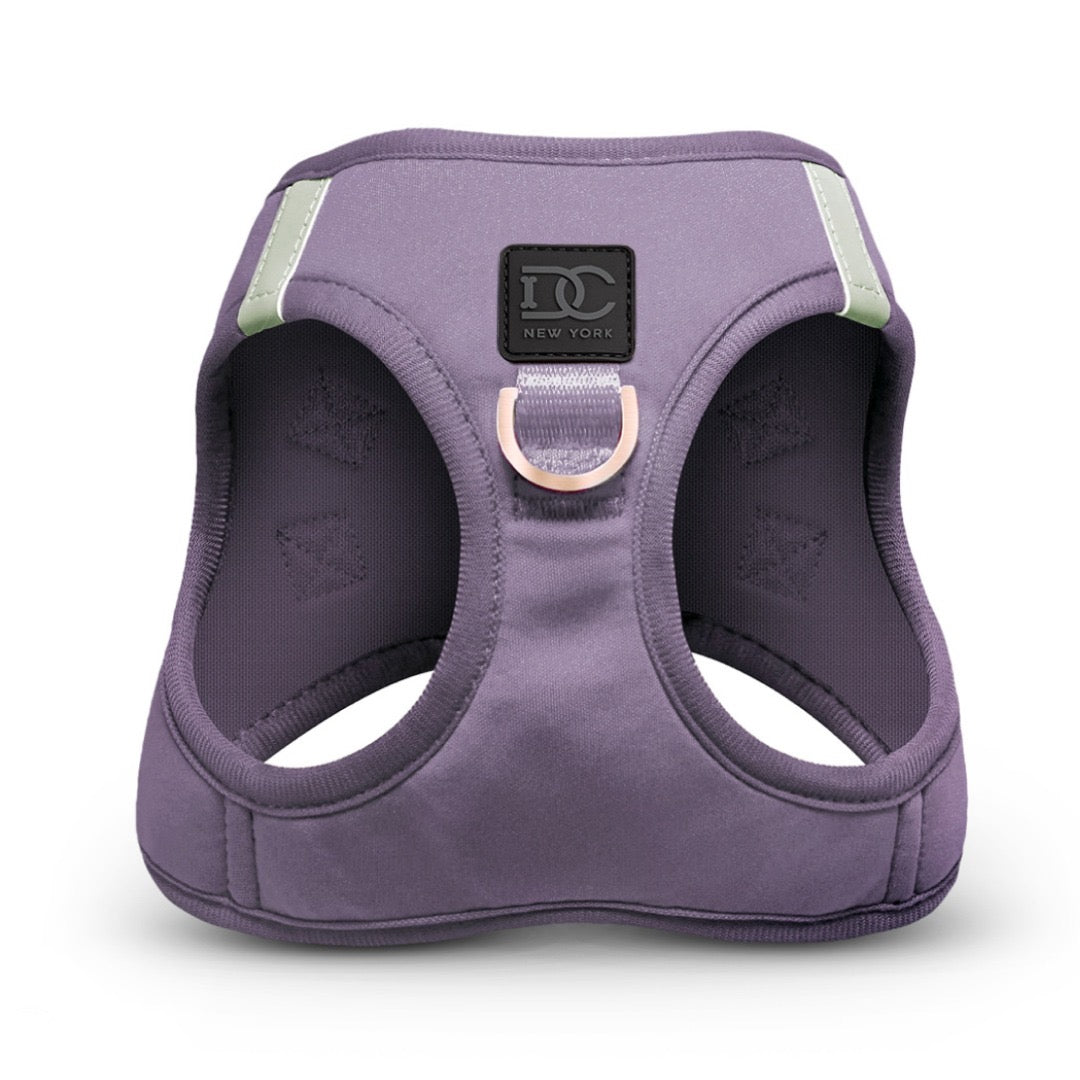

Leave a comment